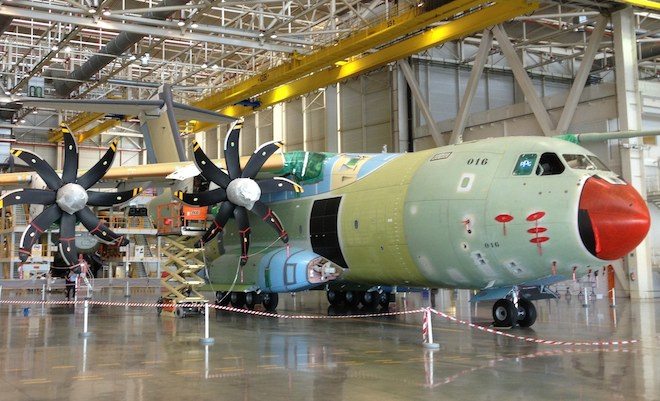
Airbus Defence and Space has sought to reinforce the message that the former Airbus and EADS military divisions are now gathered under the one banner and offer a family of products that spans air superiority fighters, transports, multi-role tankers and unmanned aerial systems (UAS), plus the services required for both initial and ongoing support.
The wide range of aircraft cover military, civic and humanitarian missions in a global military aircraft market worth $82.2bn in 2013, briefers told aviation media in Seville on Monday. With each category of aircraft a road map of further development is plotted out to enhance capabilities in an ever-changing marketplace and operational backdrop. Perhaps nowhere is this plan as intriguing as it is in the field of UAS development.
Airbus Defence and Space is seeking to cover a broad spectrum of unmanned craft from hand-launched tactical drones such as the Tracker to proven Medium Altitude Long Endurance (MALE) systems such as the Harfang. To date Airbus has accumulated over 18,000 flight hours on operations in Afghanistan in less than four years. High Altitude Long Endurance (HALE) systems such as the Eaglehawk features in its plans as do High Altitude Pseudo Satellites (HAPS) which are solar powered, lightweight platforms with extremely long dwell times in the stratosphere.
And while the UASs are the brave new world at Seville, there is no hiding the massive hangars where the C295/CN235 range and the new A400M are brought to life. Viewing the production of the A400M is an impressive process as the four-engined giant’s components are carefully brought together at each stage until the final product is ready for delivery. Deliveries are now underway and the A400M is proving itself mission-ready, as evidenced by the fact that it was called into an active role in Mali for the French Air Force within months of service entry. Even so, flight testing continues to broaden the range of operational tasks that will be able to be performed.
Underlying the hardware are the many services to support the aircraft. Flightcrew and maintenance training programs, MRO, IT solutions, type modifications and tailored Entry Into Service (EIS) packages are some of the available options for the various fleets.












